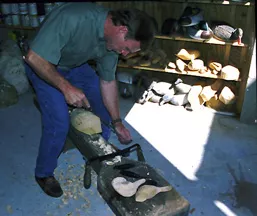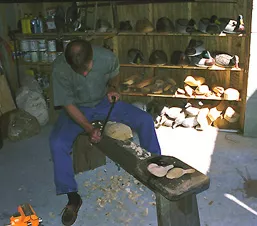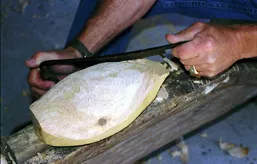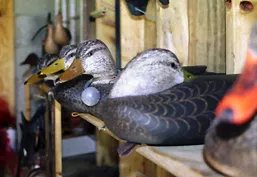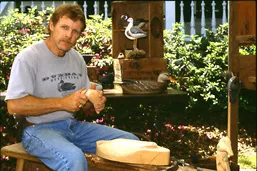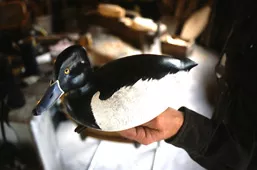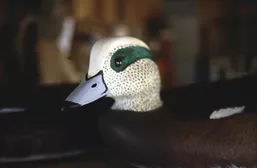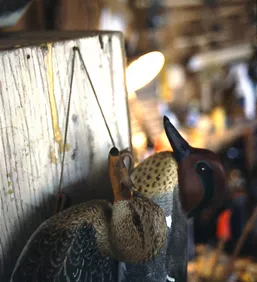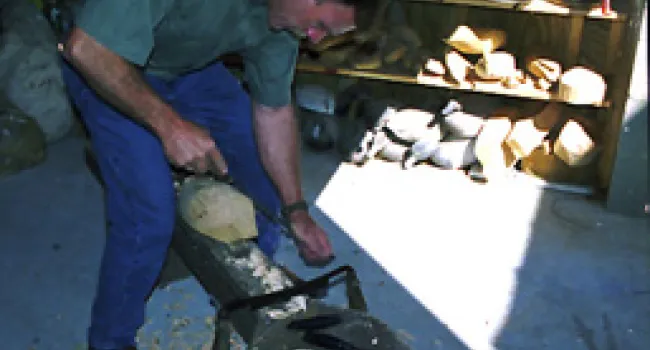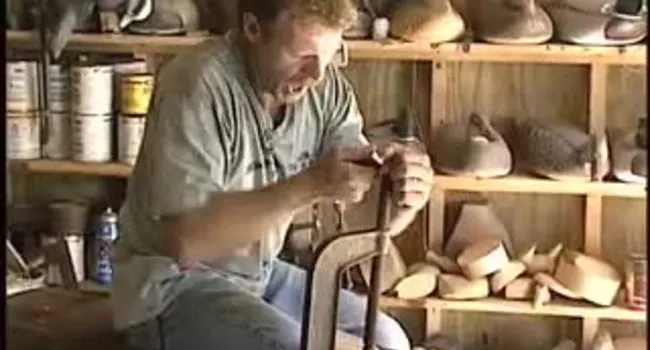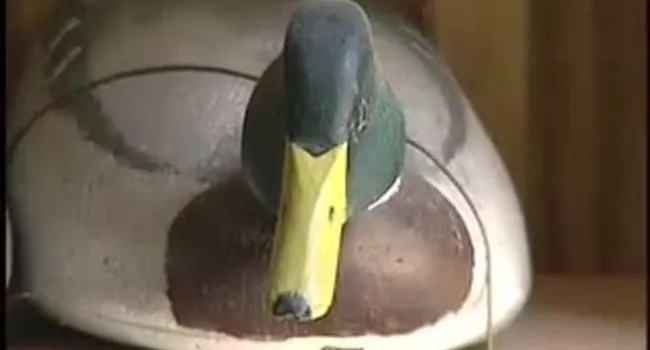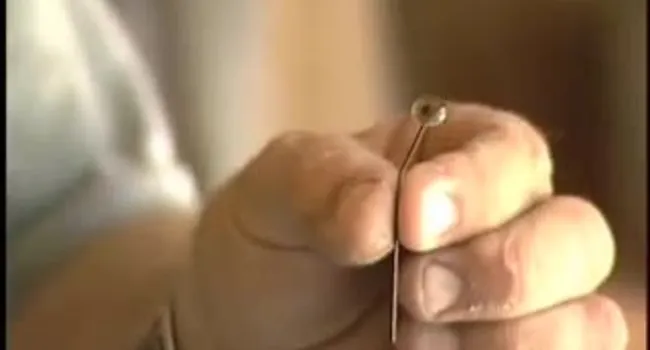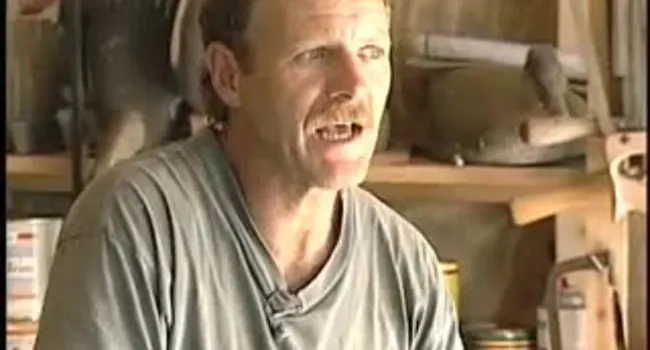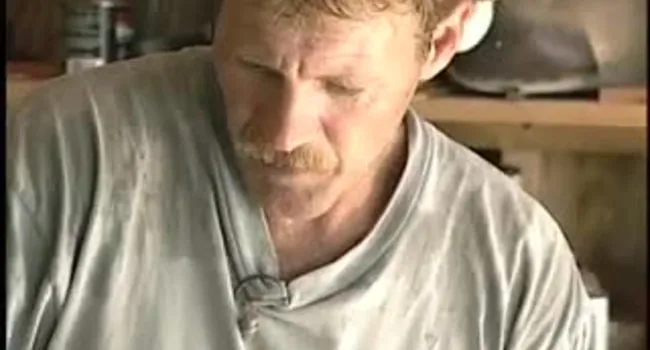A native of Yonges Island, South Carolina, Tom Boozer has been carving decoys for over twenty-five years. He learned the craft from a family friend and local hunter, Olin Ballentine. Ballentine taught him much about the traditional decoy wood, white cedar, and showed him how to select the right tree. Every two years, usually in December or January, Tom goes to a private tract of land on the Congaree Creek to cut his own trees. Following the cutting, Boozer then allows the wood to dry for two years before he begins carving his decoys.
Boozer is the state’s only full-time maker of hollow-body gunning decoys authentic to the period of 1846-1940. His decoys are entirely handmade. He uses only a pocketknife, draw knife, rasp, and chisels. Tom refuses to use power tools and modern machinery because he wants to preserve the traditional methods of decoy making. In this way, he pays tribute to a craft with close to a 2,000-year-old history.
Decoys are indigenous to North America. Their use has been dated as early as 1100 AD. The colonists learned the art of making decoys from the Native Americans who relied on decoys to lure wild birds for food. They then improved the decoys by using wood that was more durable than the natural fibers and feathers bound in twine favored by Native Americans.
After Boozer completes the carving, gluing, and painting of the decoys, he then rigs and balances them for hunting conditions. When decoy rigs are thrown overboard, they must appear absolutely natural; each one being different in attitude and not looking like a line of soldiers at attention. Each fall, hundreds of Boozer’s decoys can be found “swimming” in the rivers, ponds, and salt marshes of South Carolina and other Atlantic states.
A true decoy maker like Boozer must be able to quickly and efficiently produce many functional, sturdy decoys, representing the species accurately in design and plumage. Boozer produces an average of 200 decoys a year. A true decoy is not to be confused with contemporary realistic bird sculptures which take can take hundreds of hours to make and are not intended for hunting. Boozer places a great deal of emphasis on teaching the history of decoys and their cultural heritage during his hands-on demonstrations and to his students. Although he teaches students free of charge, most “would-be-apprentices” lose their desire due to the rigors of the physical handwork involved in producing decoys.
Tom Boozer has received more than one hundred awards at gunning contests and his work has appeared in, among others, South Carolina Wildlife and Southern Living magazines. In 1998, he was awarded a Jean Laney Harris Folk Heritage Award for his devotion to preserving the authenticity of decoy making. He has also received invitations to almost all of the major decoy shows, including the Waterfowl Festival in Eaton Maryland, the Currituck Show in Elizabeth City, North Carolina, the Southeastern Wildlife Expo in Charleston, and a host of others.
